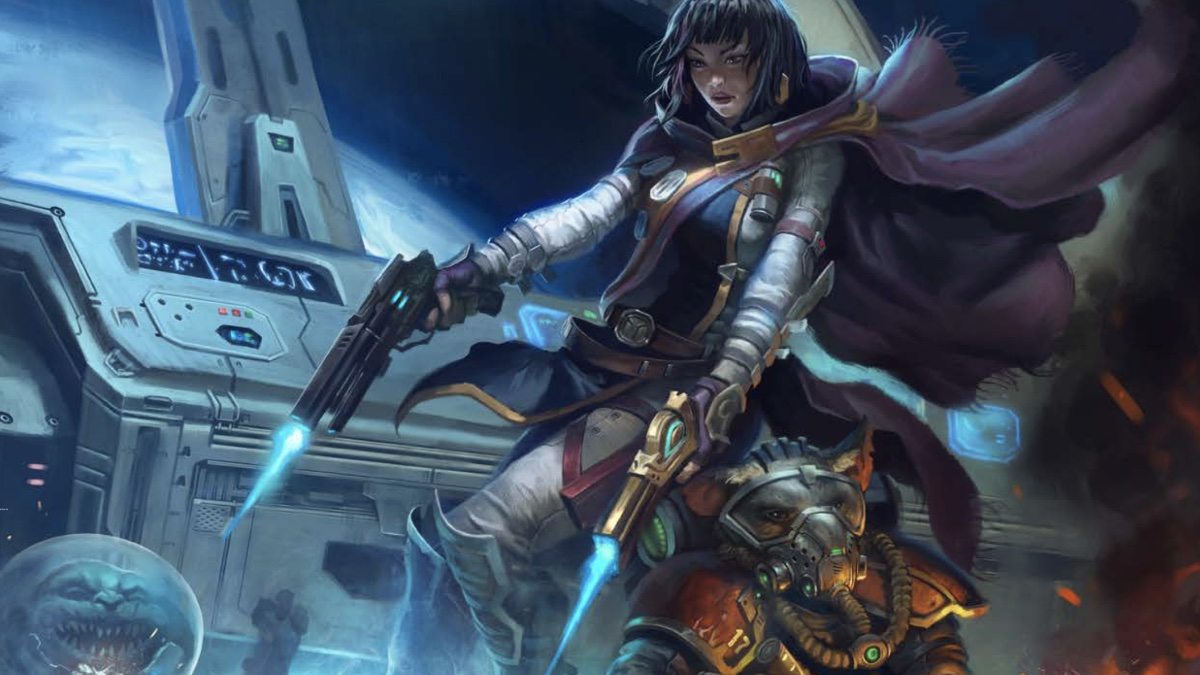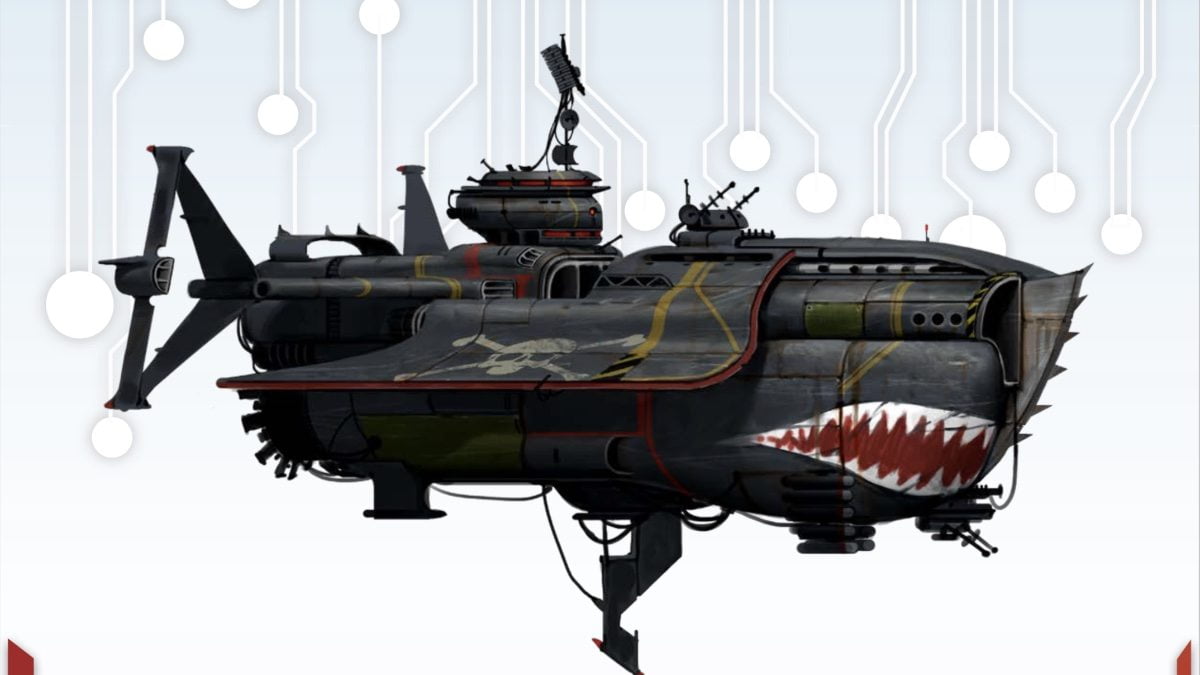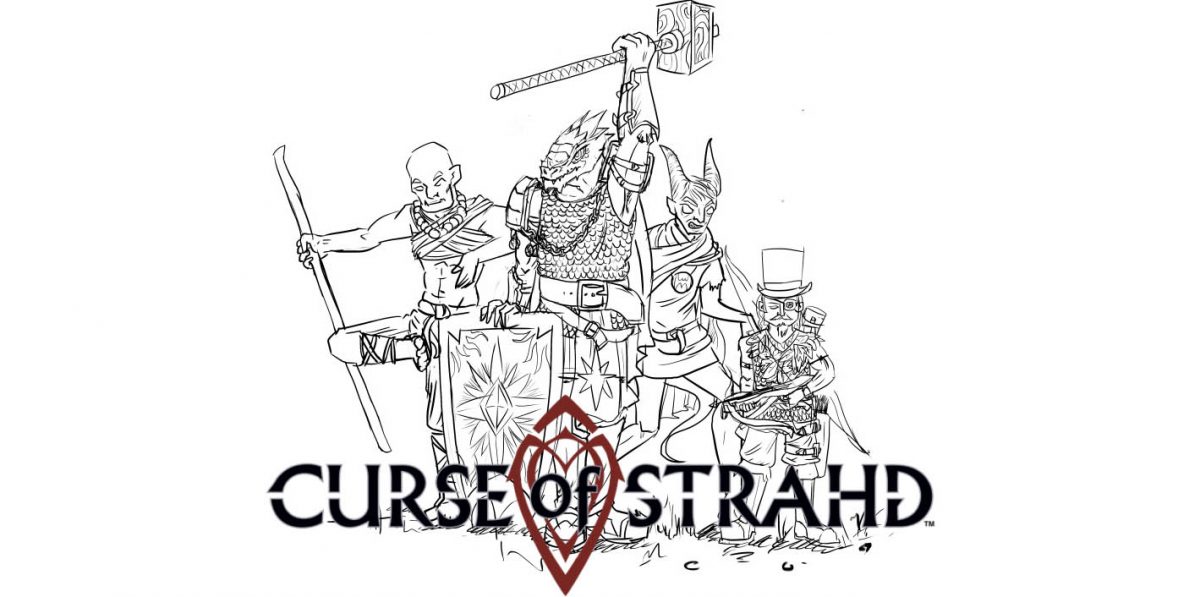
My task, should I choose to accept it, is to convert one Dungeons & Dragons 5e die hard, two D&D neophytes, and one completely uninitiated RPG player to Starfinder.
I should mention that I’ve never actually played Starfinder. Or Pathfinder. Or D&D. Or GM’ed anything other than the occasional session of Imperial Assault.
Should be a piece of cake.
Learning From the Best
So how did we get here? It started about a year ago when I discovered the Glass Cannon Podcast, a real-play RPG podcast where five friends pick their way through a Pathfinder adventure path (a series of five books that comprise a larger story; they take years to complete). I’d watched real-play events before, mostly the YouTube videos of the live Acquisitions Incorporated D&D games put on by the Penny Arcade folks. Something about the collaborative storytelling aspect of the game (in both D&D and Pathfinder) appeals to the writer in me. The ridiculous on-the-fly improvisation appeals to my inner showman. The problem, really, was finding a group that I felt comfortable playing with (and time: there’s never enough time for all of my hobbies. Sometimes I have to accept that I just can’t do everything).
I continued to scratch the itch (somewhat, it’s like being able to reach just the edge of a spot in the middle of your back) by working my way through the GCP‘s backlog. I listened as GM Troy LaVallee baited his players, cheered for them, railed against them, and made mistakes along the way. While he obviously had done his homework each session and knew his game well, there were plenty of times when I recognized that he was using confidence and bombast to push through challenges (be they sticky rules or recalcitrant players).
“That,” I said to myself, “that I know how to do.”
Missed Opportunities
I started to acquire bits and pieces of Pathfinder gear as I came across deals, employing the “if I surround myself with enough stuff, I’ll eventually have to pick it up” method. A bestiary here, a rulebook there, the ridiculously good starter box. But I still couldn’t pull the trigger, gather the kids around the table, and dive in.
Then someone else went and did it for me.
My son was invited to a D&D game by a friend of his and I lost my opportunity to introduce him to Pathfinder first. Still, like any good geeky father, I made sure he was ready for his first session, grabbing the Player’s Handbook, the Character Folio, some new dice, even painting up a mini for his dwarven cleric. He might not be playing the game I was interested in, but I was going to make sure he represented Karcz nerdery with pride.
It came as no surprise that he loved it – combining performance, camaraderie, and just enough math to make things interesting. I listened to tales of his spider-sandal wearing, bagpipe playing cleric as he decompressed from sessions, happy that someone had stepped up and introduced him to the game that I never really had a chance to embrace when I was his age.
Enter Starfinder

About this time, I started hearing about a brand new product from Paizo. Starfinder was going to be a blasters and aliens (and laser swords and interstellar magic) sci-fi RPG that built off the (currently missing) bones of Golarion, the core world of their Pathfinder game. The more I read about it, the more excited I got.
Here was an opportunity to start fresh. Moreso, here was an opportunity to create a completely different game from what my son and his friends were already playing.
After months of waiting and getting teases of the new Absalom Station and playable races, I finally acquired a copy of the Starfinder Core Rulebook. Cracking it open, I knew that I was home. There were fierce soldiers who looked as much like humanoid T-Rexes as anything else. There were classes who could use technology to tap into magical forces and create armor (like Iron Man mashed up with Green Lantern and Doctor Strange). And those were just the player characters. Additional aliens, like an entire planet that embraced undeath to (ironically) avoid a species extinction event, lurked in the corners, and they weren’t even the worst this universe had to offer. It was like someone had taken everything I love, fantasy, science fiction, superheroes, and horror, tossed them into a blender, and hit puree.
And the mechanics weren’t difficult at all. If anything, they were a little easier to parse than what I’d grown used to listening to actual-play Pathfinder podcasts like the Glass Cannon. I could tell that if I were more familiar with Pathfinder, I’d have an easier time, but there was clearly an effort made to smooth the learning curve for new players, while keeping enough slack in the line for more tactical players to experiment.
I could do this, I could run this game.
Gearing Up Montage

A week or so later, I mentioned Starfinder to my son, and was happy to see he was as interested in playing as I was. My weeks of blabbing about the game had been infectious, apparently.
“You could GM a game for us,” he said.
“Except for the part where I don’t play, don’t GM, and haven’t done something like this before,” I countered.
He waved it off. “Why are you getting all the books then? You can do this.”
Emboldened by my son’s faith in me (if not necessarily my own faith in myself), I did for Starfinder like I did for Pathfinder, buying everything I could get my hands on. Besides the Starfinder Core Rulebook, I snagged the Alien Archive (akin to the Pathfinder Bestiary, but better because you can actually convert dozens of these creatures into playable races), Pawn Boxes for both books (I know, I know – minis are on the way, but I’ve got to wait for the Kickstarter to ship), the GM Screen, and more maps than I knew what to do with.
Inspired by the Glass Cannon Podcast, I subscribed to the Sci-Fi version of Syrinscape and happily discovered that, not only were there a myriad of Paizo-licensed Starfinder soundsets in the app, there were collections specific to the Starfinder Society adventure I wanted to run as well as the Dead Suns campaign. I’ll talk more about Syrinscape in my future playthrough article but here’s a spoiler: if you GM Starfinder, you need this app.
The GCP crew also have a deep love for Hero Lab and I seemed to remember mention of a Starfinder update, so I went hunting. After downloading a couple of apps, I discovered that Hero Lab was using their new Hero Lab Online (HLO) platform for their Starfinder content. I’ll also talk more about HLO in a future article, but from the branding to the ease of use, character creation in HLO makes the job of novice and expert players alike ridiculously easy (and fun).
Session 0 – Prep

After getting some advice from the folks on the Paizo message boards, I decided to not jump directly into the Dead Suns AP but instead start with the first one-hour session of the Starfinder Society scenario, Into the Unknown. It’s a quick run designed to get new players, especially, comfortable with that familiar RPG arc of going to new places, finding out interesting things, meeting new people, then shooting them in the face.
I created a Google Drive folder with the PDFs of the iconic characters (downloadable for free from Paizo) and shared the Core Rulebook with my players. They’ll get their own copies at some point but they’re teenagers, with the limited funds that inevitably brings. Sharing was the only way I could even nominally ensure they would be ready for the session. In addition to the rules information they needed, I added a document with an invitation from the PC’s in-game contact (this is what their characters would be responding to at the beginning of the session) as well as instructions from me to pick a character to play and info on how I thought things would go (we’d play, then roll new characters after).
One player had his character picked out immediately, the kasatha Solarion, Altronus. The others took the rest of the week (to my frustration), but finally the girls picked the human envoy, Navasi, and the lashunta Technomage, Raia. That just left my son, who wanted to see where the party needed help after everyone else picked. Since there was no real melee power among them (and knowing that a few Intimidate checks would definitely go his way if he chose the vesk), I talked up Obozaya, the vesk Soldier. He agreed that she sounded cool and I had my party!
I started reading and re-reading the scenario to make sure I was familiar enough with it that, when I started to improv things, I didn’t go completely off-story. I grabbed a few images from the Into the Unknown PDF and tucked them away in a Google doc so that I could show them what they were up against without having to show them the AP page I was working from (even though I ended up doing that anyway). I also included in the document a Datapad entry with all the pertinent details they would need in order to progress that I could share with them in the event they killed the final boss (or failed to ask the right questions).
I gathered the PC pawns, as well as pawns for the NPCs and enemies, grabbed a couple of maps, scribbled down some notes on index cards, and ran through the Syrinscape Into the Unknown soundset to familiarize myself. All that was left to do was start playing.
Next week.
Thanks to HLO and Syrinscape for providing discounts and codes to try out their products. Opinions (and TPK-inducing mistakes) are my own.




I recently (i.e. late November) started GMing Pathfinder for a group of (mostly) strangers, after almost a year of gathering pathfinder content and 20+ years of informal role playing with my two brothers when we got together.
Funny thing, my preference was Starfinder, but the group wanted fantasy, so we ended with Pathfinder. Never mind that, we are aiming for our twelfth session, and I am enjoying it to no end.
Looking forward to hearing more of your Starfinder adventures.